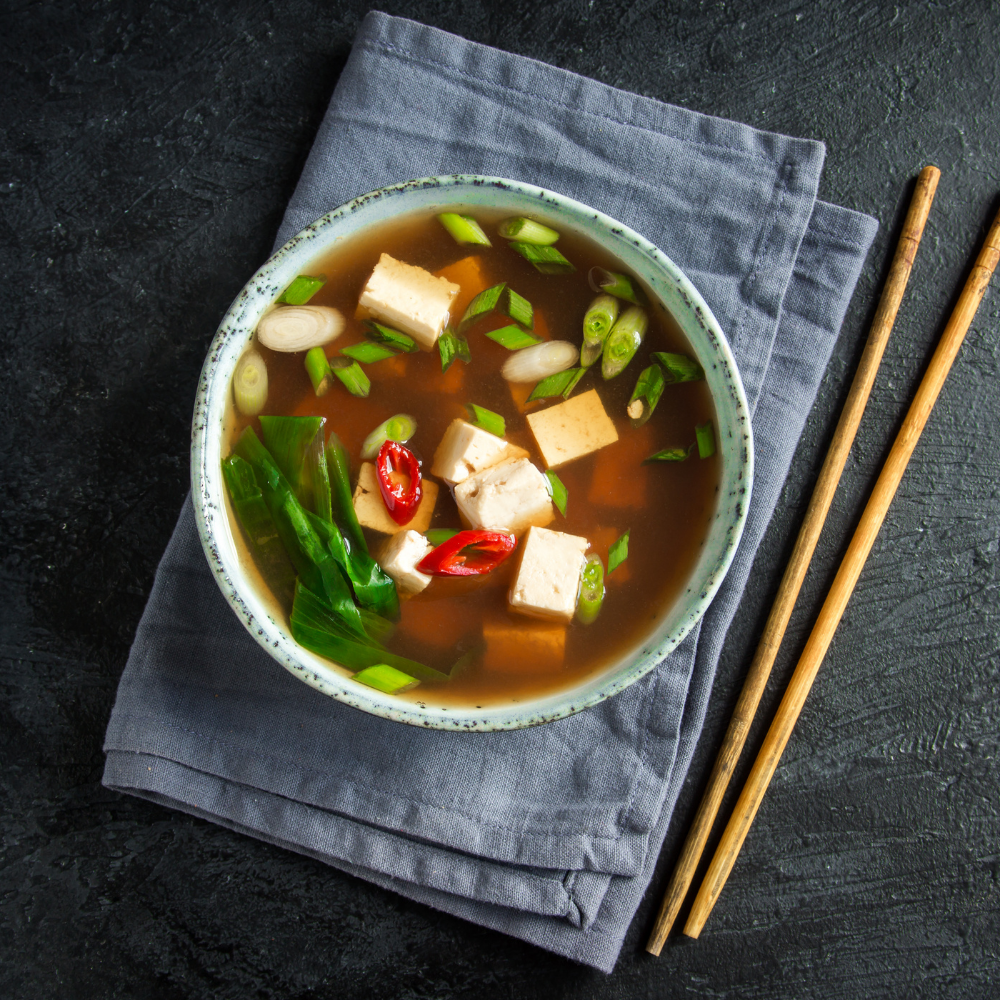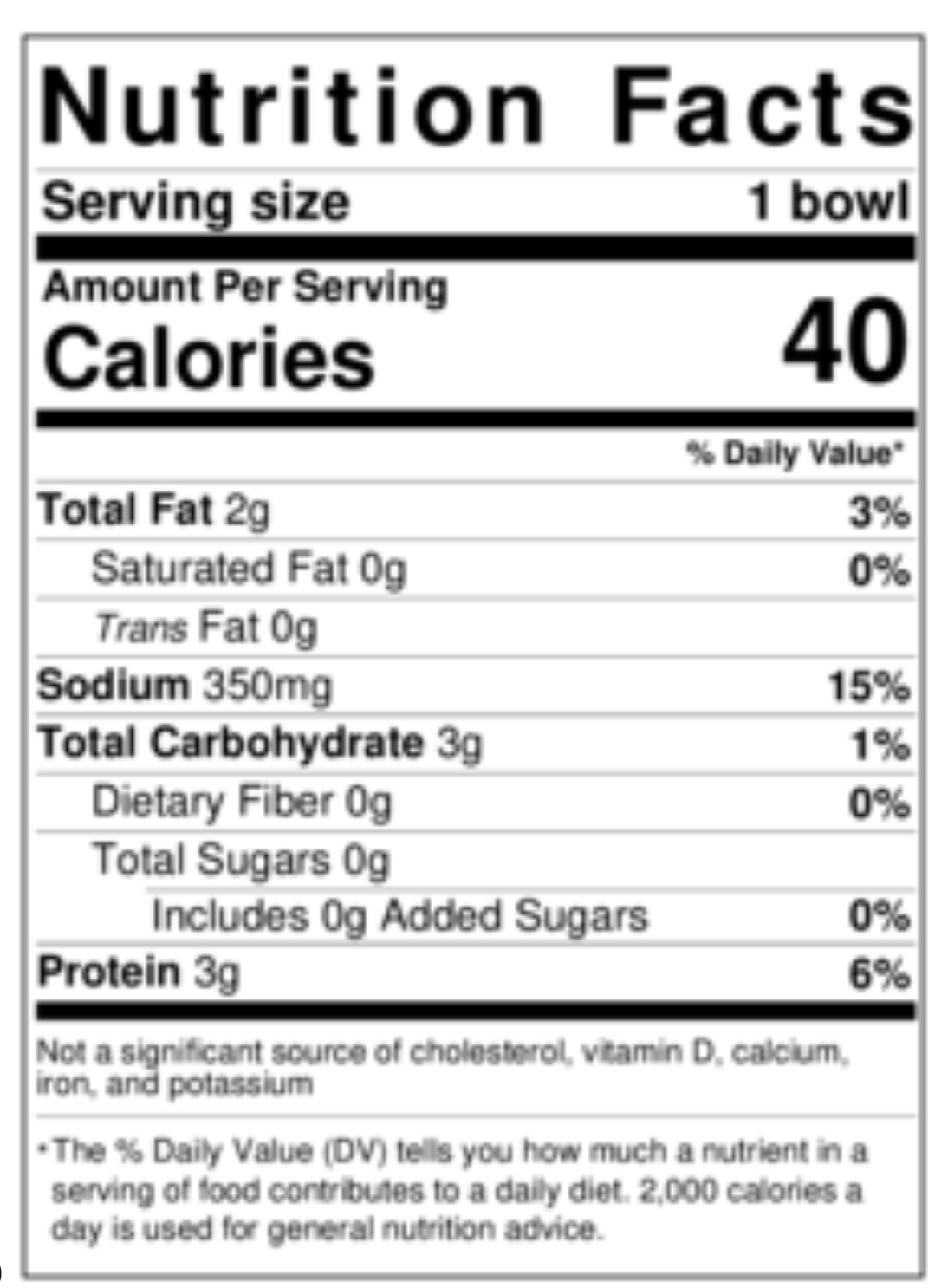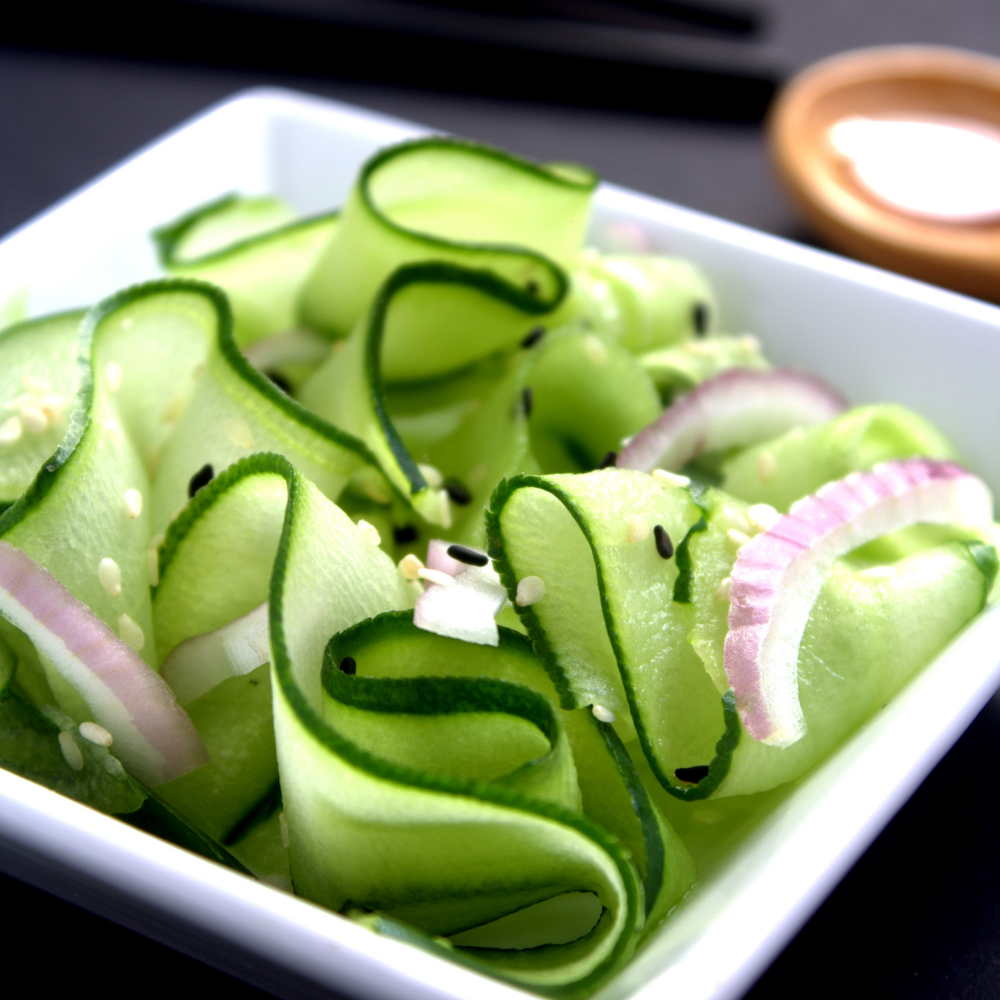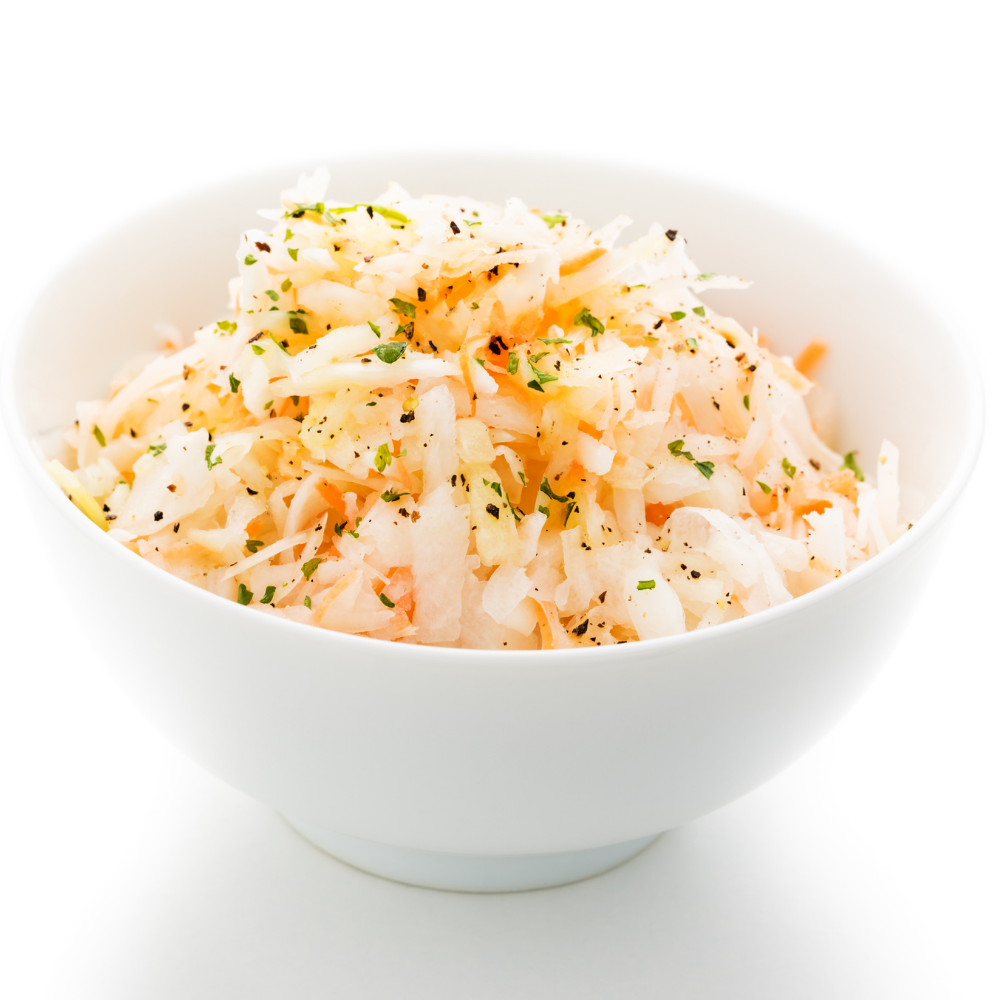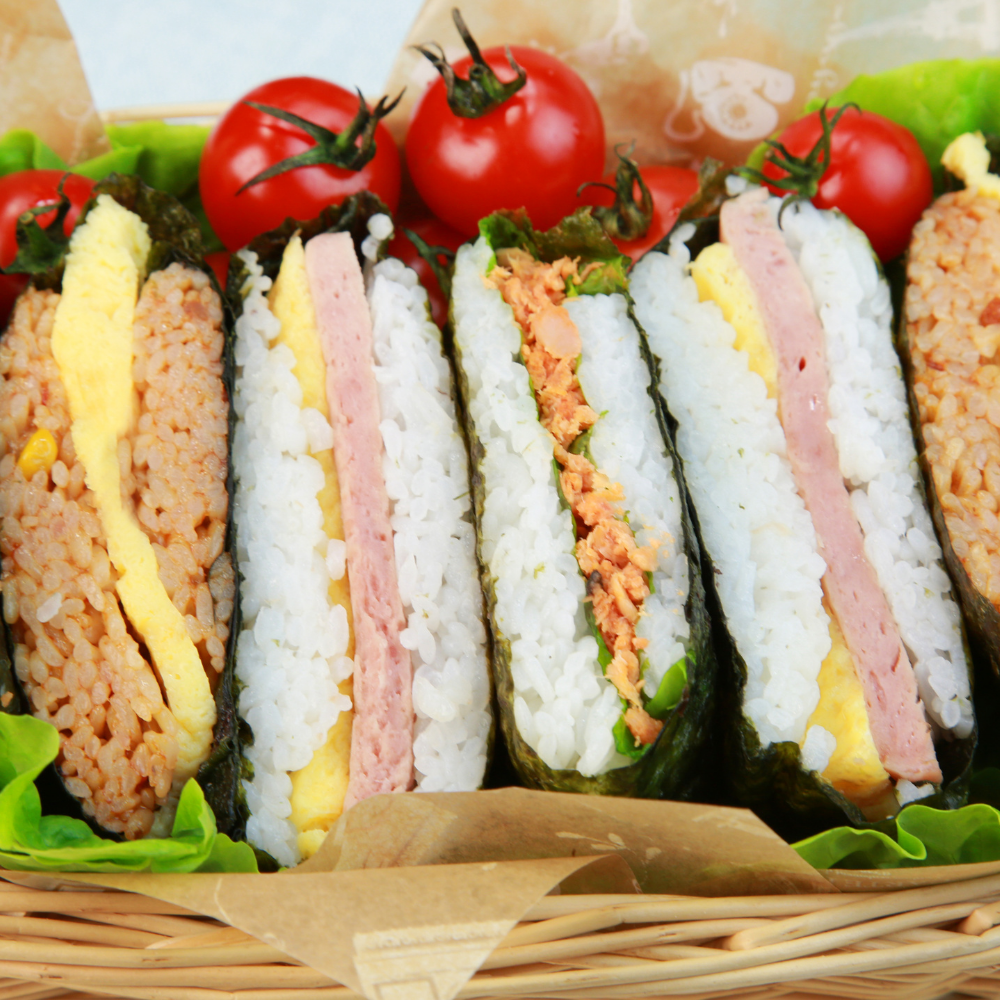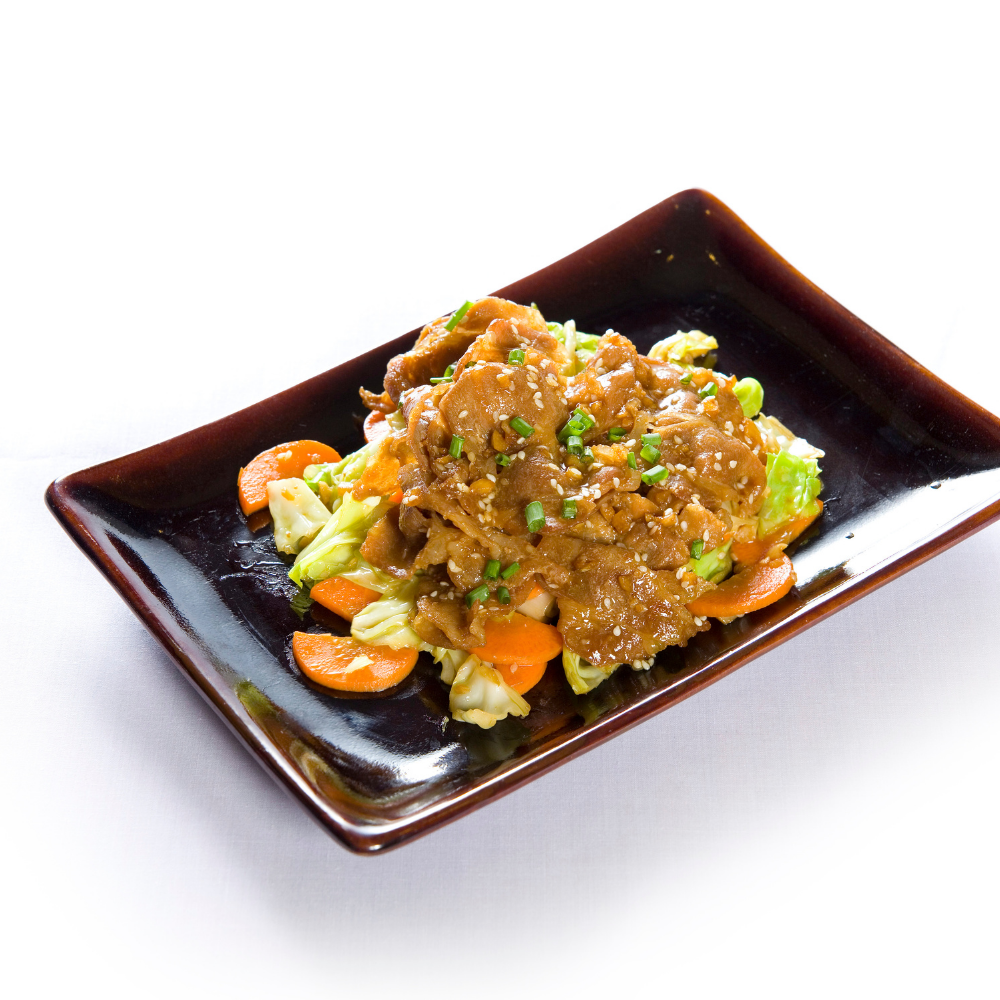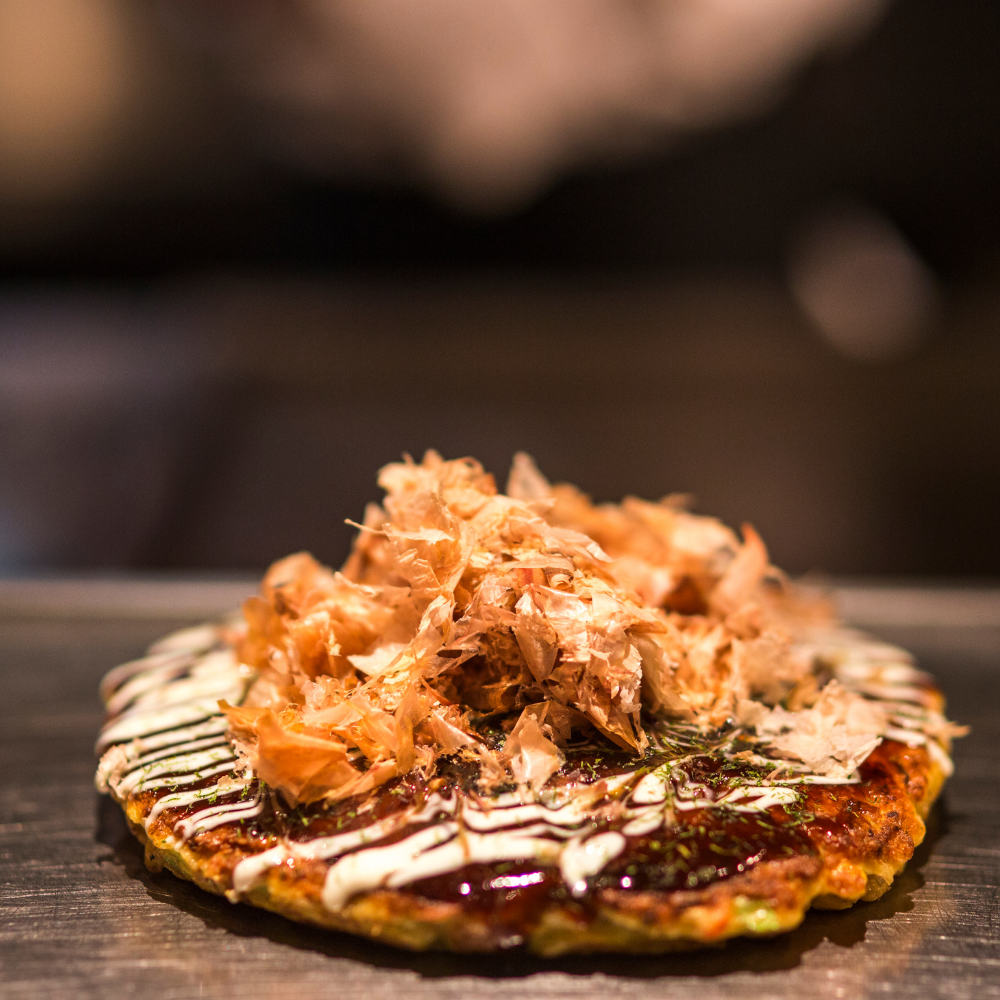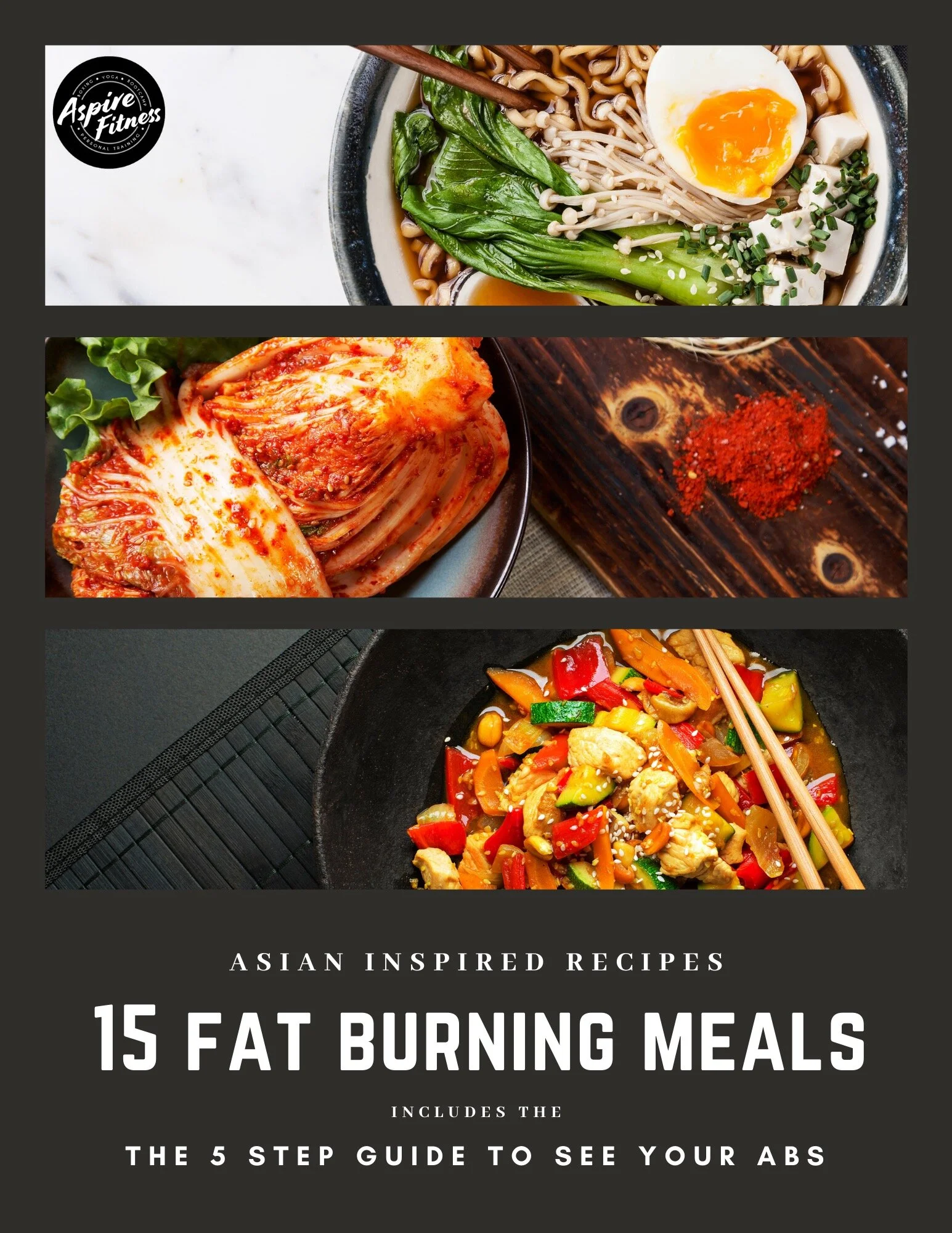25 Healthy Japanese Foods (Is Japanese Food Healthy?)
Being from Southern California has allowed me to grow up around amazing foods and cuisines.
Japanese food is perhaps one of the most popular types of cuisines you could find here as both presentation and flavor are unbeaten.
There are all types of Japanese specialty restaurants from sushi and curry to ramen and yakitori, so there’s no doubt you are bound to encounter Japanese food all around the world
There’s also a huge chance you will fall in love with it as there’s nothing quite as unique as Japanese food.
Although Japanese food is delicious, is it healthy?
Japanese food is very healthy as many of the dishes served focus on high quality protein with whole ingredients that are filled with many micronutrients that support health and a balanced diet. Japanese cuisine carries a strong focus on quality which thus translates to a healthier diet.
Since there is such a large variety of Japanese foods to try, I decided to write a guide as to what I believe are the tastiest and the healthiest Japanese foods you can try.
In this article, I’ll be going over my 25 favorite Japanese foods that are just as tasty as they are healthy.
Let’s take your palette for a ride to Japan with these tasty options.
25. Miso Soup
Miso soup is another staple in Japanese cuisine.
Miso is a fermented bean paste that is a staple to Japanese cuisine.
The traditional Japanese condiment comes in the form of a thick paste that is made from fermented soybeans, which are a good source of protein.
Miso soup is typically served as an appetizer at Japanese restaurants.
Typically, you will find tofu, scallions, and seaweed with a light dash broth and a dabble of miso.
Together, these ingredients form a light, savory starter that is sure to open your appetite.
Miso soup is low in calories, making it an ideal addition to any weight loss diet.
An average serving of miso soup contains 40 calories, 3 grams of carbohydrates, 2 grams of fat and 3 grams of protein.
This is a great ratio of macronutrients and you can expect to sip on this delicious soup even while being mindful of your diet!
24. Sunomono
Sunomono is a classic Japanese appetizer and is extremely refreshing when served before a heavy meal such as katsu or curry.
If you’ve been to a Japanese restaurant, you’ve most likely been served this light, refreshing, vinegary cucumber dish.
Not only is sunomono delicious, it is also impressively easy to prepare yourself.
The dressing is traditionally prepared in two different ways.
Sunomono can be prepared with amazu sauce, which is made from rice vinegar and sugar.
By replacing the sugar in the amazu sauce, you can enjoy a low carb, high fiber dish guilt-free.
Sunomono can also be prepared with ponzu, a staple citrus-based soy sauce in Japanese cuisine.
This refreshing dish is light and perfect to eat any time of the year.
Let’s take a look at the nutrition facts.
One cup of sunomono has 46 calories, 4 grams of carbs, 2 grams of fat, and 1 gram of protein.
Sunomono also has a low sodium content with only 350mg per serving.
This promotes a healthy meal that can really be enjoyed with any Japanese cuisine!
23. Baked Chicken Katsu
Katsu is one of my favorite guilty pleasures.
Katsu is typically pork deep-fried in a crispy panko batter and served with katsu sauce, rice, and a side of cabbage salad.
However, regular katsu is both high in fat and carbs, since it is deep-fried.
An absolute godsend substitute is baked chicken katsu.
This dish is still coated in a similar panko breading but will save you tons of calories and extra greasy fat since it is baked instead of fried.
When served with a fresh salad and some rice, you have a well-balanced, tasty meal in front of you.
Per 100 grams, baked chicken katsu has 112 calories, 13 grams of carbs, 8 grams of fat, and 12 grams of protein.
Remember that a balanced meal comes with eating additional foods to balance your macros.
This meal promotes high protein which is great for building muscle and staying consistent with your fitness goals.
22. Goya Chanpuru (Bittermelon)
Goya, or bitter gourd, looks like a cucumber’s rigid and bumpy cousin.
Goya is most commonly found in Asian supermarkets and is in season during the spring and summer.
Goya has become quite notable due to its acclaimed status as a staple Japanese superfood.
In Japan, goya is most commonly found in an Okinawan stir fry dish made with goya, tofu, pork, and egg called Goya Chanpuru.
If you plan on making this recipe at home, it is entirely possible to substitute the pork with leaner meat, such as chicken.
However, by itself, goya chanpuru is a protein-packed dish that is served during the summer in southern Japan.
The tofu, meat, and eggs are all excellent sources of protein; and all three can be found in goya chanpuru.
An average serving (100 grams) of this Okinawan classic has 118 calories, 2 grams of carbohydrates, 7 grams of fat, and 8 grams of protein.
Remember, you want to make sure that your calories are coming from a good balance of the three essential macronutrients which are: carbs, fats, and proteins.
Goya Chanpuru is a delicious way to incorporate a meal that has a high protein and low carb ratio into your weight loss diet.
21. Chawanmushi (Japanese Egg Custard)
Chawanmushi is an egg custard that is often served as an appetizer or as a part of kaiseki, or a traditional Japanese multi-course meal.
Chawanmushi is a steamed egg custard that is filled with a variety of different ingredients such as shiitake mushrooms, fish cakes, shrimps, etcetera with a small drizzle of sauce made from dashi, mirin, and soy sauce.
This delicacy is typically steamed and served in small decorated ceramic cups.
My favorite part of chawanmushi is the silky smooth texture of the steamed egg; it reminds me of silky tofu.
This dish is not only delicious, but it is also a great source of protein.
One serving cup of chicken and shrimp chawanmushi contains 144 calories, 3.8 grams of carbs, 10.2 grams of fat, 3.8 grams of fat, and 14.5 grams of protein.
You can always add more protein into your diet, and with a dish as versatile as this, you will not get tired of eating or making this Japanese classic.
20. Japanese Coleslaw
Japanese coleslaw is a staple side to most Japanese dishes.
If you’ve ever had katsu or any sort of Japanese bento, your meal most likely included a side of Japanese coleslaw.
Also called Japanese cabbage salad, this simple dish is a refreshing palette cleanser for any meal.
This side dish pairs well with just about any food.
The crisp fresh cabbage is highlighted with a light toss of dressing, making this the ideal palette refresher during a hefty meal.
There are many different dressings you may include but the dish’s main ingredient is thinly shredded cabbage along with your dressing of choice.
The star of Japanese cabbage salad is the dressing.
There are many variations but the most common dressings are: lemon and soy sauce (ponzu), creamy miso, or a “house” dressing that is commonly found in Japanese restaurants.
The choice of dressing is yours, but it is important to be discerning about the possibly high sodium and sugar content in certain types of dressings.
Salad is not a vessel to consume dressing; instead, dressing is meant to enhance a salad’s texture and freshness.
Although cabbage salad does not necessarily have any spectacular nutritional value, it is a guilt-free addition to any meal you are digging into.
This salad is just as easy to make as it is to eat.
There are also plenty of ways to dress the salad up, by adding almonds, scallions, chicken, and crunchy wonton pieces to create an Asian-style chicken salad.
Per serving, a simple Japanese coleslaw with bonito flakes and sesame seeds with a sweet soy sauce dressing will contain around 140 calories, 13.6 grams of carbs, 7 grams of fat, and 4 grams of protein.
19. Soba (Buckwheat noodles)
When I think of summertime, soba will definitely come to mind.
Although soba noodles can be served hot and cold, my personal favorite is eating the noodles cold in a light tsuyu (soy sauce) base with a hint of wasabi.
This light, yet refreshing dish cools your body down and rejuvenates you from the inside.
Soba noodles are unique in both texture, color, and taste. This is because soba noodles are made from buckwheat.
It’s signature nutty and rich consistency is a hallmark of this Japanese classic.
On average, 2 oz (60 grams) of soba noodles are 146 calories, 35 grams of carbohydrates, 1 gram of fat, 5 grams of protein.
Soba noodles can vary by the amount of buckwheat flour used and flavorings added.
Some specialty stores even sell soba noodles with flavorings like green tea or sesame.
Since Soba noodles have around 5 grams of protein in it, we can expect them to be a lot healthier than traditional noodles since regular noodles are usually just comprised of carbs.
18. Yakitori
If you love kebabs, or just meat on a stick, then you will fall in love with Japanese yakitori.
Yakitori is mostly served at izakaya, a Japanese style pub where they specialize in small tapas and cold beer.
The iconic staple to Japanese barbeque is served either with shio (salt) or yakitori sauce.
Yakitori is unique because there are dozens of options and cuts of meat you get to try.
An astonishing selection may include: breasts, thighs, cartilage, wings, skins, tenderloin, livers to gizzards
Yakitori is often grilled with onions, scallions, or bamboo shoots.
On average, one plate of yakitori will contain about 180 calories, 17 grams of carbohydrates, 1 gram of fat, and 20 grams of protein.
Depending on how big or small the skewer size is, every yakitori’s macros will be slightly different.
However, you can guarantee that this meal is low in carbs and high in protein.
17. Agedashi Tofu
Agedashi tofu is one of my absolute all-time favorite dishes.
Agedashi tofu is a lightly deep fried tofu dish served in a warm tentsuyu broth.
The crispy costing is typically made by coating the tofu in potato starch, meaning there is no extra batter to fry the tofu with.
This dish is a very popular appetizer or late-night snack, which can be commonly found at izakaya, or a Japanese pub-style restaurant.
One of my favorite aspects of this dish is the light, crispy coating around extra silken tofu that gives a “melt in your mouth” feel.
But what truly makes agedashi tofu so delicious is the broth it is served in.
The warm, slightly sweet and umami flavor is delicate and tasty. It is truly a dish that I relish every bite I take; every bite feels like a warm hug.
As a side dish, agedashi tofu is often accompanied with noodle dishes, like ramen.
Agedashi is also meant to be enjoyed immediately upon serving, or the crispy coating quickly becomes soggy.
An average serving of agedashi (around four to five pieces) contains 160 calories, 7.9 grams of fat, 9.4 grams of carbs, and a whopping 12.9 grams of protein.
Agedashi tofu is a great way for you to explore different protein options to add into your diet, while expanding your culinary palette.
A high protein diet, along with a consistent exercise regimen, is essential for your body to burn fat and create muscle.
16. Onigiri (Seaweed-wrapped rice balls)
Onigiri is a Japanese rice ball which is formed and molded into a triangle shape.
This Japanese staple is both easy to make and convenient to eat on the move.
Think of onigiri as a sandwich, and its grab-and-go appeal.
Onigiri is becoming culturally significant thanks to its constant sightings in anime, mangas, and movies.
The unique thing about making onigiri is that there is no limit when it comes to choosing possible fillings to put inside an onigiri.
Popular fillings that are found include ume (pickled plum), salmon flakes, salmon roe, kombu, or tuna mayo.
Plain onigiri with no filling is predominantly rice, which is high in carbohydrates and low in protein.
For every cup of cooked rice, there are around 200 calories and 45 grams of carbohydrates.
However, by including a high-protein filling such as salmon, you are able to enjoy this on-the-go Japanese staple while also fueling your muscles with protein.
You can also create a white and brown rice mix, or substitute out the white rice completely.
One average ball of salmon onigiri contains 170 to 200 calories, 30 grams of carbohydrates, 5 grams of fat, and 8 grams of protein.
Remember, these are rough estimates.
If you decide to make this recipe at home, you are more than welcome to customize and alter the portions you are using to fit the ideal macros of your diet.
15. Edamame
If you’ve had miso soup at a Japanese restaurant, chances are, you have also encountered edamame.
Edamame is usually sold and served in their pods.
Edamame is typically prepared with only a pinch of salt and can be eaten alone or added to a variety of different dishes including salads, stews, or noodles.
Edamame beans are whole soybeans that have not matured yet hence their bright green color in comparison to a mature soybean, which is a neutral tan or beige color.
Edamame is one of my favorite foods to snack on while continuing to maintain a healthy weight loss diet.
Beans are one of the best sources of plant-based protein and are a staple in many high protein, plant-based diets.
Edamame contains around 12% protein, meaning one cup of cooked edamame (155g) will give you 18.5 grams of protein,
One cup of edamame pods also contains 188 calories, 13.8 grams of carbohydrates, and 8 grams of fat.
This high protein food is perfect as an on-the-go snack, or as an appetizer you can enjoy while reaping the benefits of a healthy diet.
14. Yakisoba (Japanese Stir fry noodles)
When I describe yakisoba, the closest comparison I can think of is a Japanese chow mein.
Yakisoba is a classic Japanese stir fry dish made with mushi chukamen noodles (think egg noodle’s cousin but without the egg), pork, and vegetables.
This dish is very popular in Japan and is often sold at fairs, along the street, and at restaurant stalls.
The highlight of yakisoba is the slightly sweet and tangy sauce it is cooked in. Yakisoba sauce has been compared to Wortsechire’s sweeter, more muted counterpart.
One serving of yakisoba has both carbs, protein, and vegetables in it, making it a well balanced meal to consider.
One serving (about 100 grams) of yakisoba noodles contains around 190 calories, 2.5 grams of fat, 36 grams of carbohydrates, and 8 grams of protein.
Again, you can alter the amount of noodles and protein you decide to add into your yakisoba to fit your carb to protein ratio in your diet.
13. Kenchinjiru
Kenchin jiru is a Japanese vegetable soup prepared using root vegetables and tofu.
This popular dish in Japan is prepared in various manners using a myriad of different possible ingredients.
This hearty soup is perfect for a cold winter day, and is sure to energize and cleanse your body.
Often cooked with root vegetables, kenchinjiru is full of fiber and nutrients that are essential to fuel your body.
The ingredients are first cooked in sesame oil before being added to a soy sauce dashi base.
One serving of this broth only 190 calories, 9.7 grams of fat, 10 grams of carbs, and 11 grams of protein.
Tofu and vegetables are excellent additions to any healthy diet focused on weight loss.
12. Salmon Onigirazu
Onigirazu is onigiri that is not squeezed into the traditional triangle shape.
Instead, the square shape allows for you to add more fillings and is more similar to a traditional sandwich.
The fillings are wrapped around a bed of rice and nori.
Because onigirirazu is wrapped, instead of compressed into a ball, there is more surface area to add a greater quantity of different fillings.
Some fillings that are most popular to eat in onigirirazu are salmon or chicken katsu.
By substituting white rice for brown, using lean meats, and avoiding any sauces high in sodium, onigirirazu has the potential to be a protein packed meal to fuel your body.
One serving of salmon onigirazu made with brown rice contains around 229 calories, 30 grams of carbohydrates, 2.6 grams of fat, and 20.2 grams of protein.
11. Shogayaki (Ginger Pork) Donburi
Japanese ginger rice is a classic Japanese dish that is both healthy and delicious to include in your diet.
“Shoga” means ginger and “yaki” translates to “grill or fry” in Japanese.
This dish comprises thinly sliced pork seasoned with soy sauce, sake, mirin, and of course, ginger.
This dish translates to “pork grilled with ginger.”
Shogayaki can be found on the menu at most authentic Japanese restaurants.
Shogayaki is a staple to Japanese home cooking, and restaurants will often attempt to recreate the homemade magic in their versions.
To put it simply, shogayaki is marinated pork slices in a ginger marinade and pan fried till golden brown.
A serving of shogayaki (with no rice) has 318 calories, 4 grams of carbohydrates, 22 grams of fat, and 19 grams of protein.
This dish is fairly easy to recreate and incorporate into a high-protein diet by switching out for a leaner cut of pork or your protein of choice.
10. Takikomi Gohan (Japanese mixed rice)
Now, I’m sure you’ve definitely tried or at least heard of one of the foods listed so far. However, Takikomi gohan is my secret pleasure that I am passing onto you.
Takikomi gohan is Japanese short grain rice seasoned with mushrooms, seafood, vegetables, and meat, along with dashi and soy sauce.
Some of the most common ingredients you can expect are gobo (burdock root), aburaage (seasoned fried tofu skin), and shiitake mushrooms.
Traditional takikomi is vegetarian and can be made vegan if kombu dashi is used.
The rice is flavored by the ingredients since both are cooked together. Not to be confused with maze gohan, in which the ingredients are mixed, not cooked, together.
This steamy dish is perfect if you ever want a warm meal that is still light and packed with flavor.
One cup of takikomi gohan will contain 365 calories, 4.3 grams of fat, 50 grams of carbs, and 12 grams of protein.
9. Shoyu Ramen
Anyone’s list of favorite Japanese foods would not be complete without ramen.
There are three basic ramen flavors: shio (salt), shoyu (soy sauce), and miso.
Shoyu, or soy sauce, is the base of this classic Japanese ramen but its broth base can vary from chicken, pork, or fish broth.
Shoyu broth is salty, tangy, and umami in flavor, but is still light and not too heavy or rich.
Many times, ramen is served alongside tempura or topped with chicken or pork.
One bowl of Tokyo style chicken shoyu ramen will contain around 390 calories, 56 grams of carbohydrates, 8 grams of fat, and 22 grams of protein.
Shoyu broth base is an excellent way to enjoy ramen on a healthy weight loss diet without consuming any extra sodium or fat from a richer broth like tonkotsu.
8. Japanese Curry
Ah, the classic.
Japanese curry was and will always be a staple dish in my life.
In fact, it is one of my ultimate comfort foods.
Growing up, eating curry always meant I’d be going to bed very full and very happy.
Similar to a beef or chicken stew, Japanese curry is cooked with whatever protein of choice, potatoes, carrots, onions, and more.
This dish is also incredibly customizable.
You can find Japanese curry sauce cubes at almost any Asian supermarket.
Chicken curry is always a go-to meal for me. No matter what, I always look forward to being satisfied after a plate of curry.
One plate is always enough to knock me out.
However, Japanese curry is a great addition to anyone looking to enjoy a warm, brothy dish without any extra fats from cheese or excessive amounts of butter.
A typical plate of chicken curry will contain around 460 calories, 62.2 grams of carbohydrates, 10.8 grams of fat, and almost 30 grams of protein.
This dish contains a good amount of protein, although the extra carbohydrates from the potatoes and substituting white with brown rice can be substituted out for another root vegetable or anything else you desire.
7. Miso Ramen
Miso ramen is another popular soup base amongst ramen lovers.
Unlike miso soup, which is light in flavor, miso ramen broth is rich and intensely savory.
Miso broth is typically made from miso paste and a heartier broth than dashi, such as chicken or beef stock.
Miso ramen is sure to satisfy any savory cravings you have, as one bowl is not only packed with noodles and flavor, but can also be eaten with just about any topping of your choice.
Toppings may include, but are not limited to, seaweed, blanched veggies like spinach, fish cakes, bamboo shoots, tofu, mushrooms, along with any type of protein.
A serving bowl of miso ramen will contain about 490 calories, 16 grams of fat, for every 40 grams of carbs and 15 grams of protein.
Typically sliced pork is served with ramen, but if you want to cut back on your meat fat consumption, substituting a leaner cut or leaner protein is always an option.
6. Shio Ramen
Shio Ramen is a traditional form of ramen that has a salt based broth which focuses on its aromatics rather than the fats you get from different types of meat.
The broth used is typically a clear chicken broth, and does not have as much fat compared to other soup bases.
Shio ramen relies heavily on aromatics such as kombu and shiitake mushrooms to provide flavor.
This dish is light and simple but is still complex and umami in flavor.
Shio ramen is perfect if you’re craving ramen without the guilt, or when you just want something light for dinner
Inside a typical Shio Ramen dish there are 500 calories, 20 grams of fat, 37 grams of carbs and 16 grams of protein.
Not bad at all considering how delicious this bowl of Ramen is.
5. Niku Udon (Beef Udon Soup)
Udon soup is probably one of my staple sick-day meals.
Ever since I was young, my mother would cook udon noodles in broth on days we would feel under the weather.
Udon is also a staple Japanese comfort food.
Udon is very versatile.
It’s thick chewy consistency enables it to be stir-fried or boiled. It can even be served as a cold dish.
These noodles are made from wheat flour and possess a thicker, chewier consistency, compared to ramen noodles.
Niku udon has a flavorful broth made with a delicious dashi broth seasoned with scallions.
This dish can be found at most udon restaurants, but every recipe is unique.
One bowl of niku udon will contain about 493 calories, 50 grams of carbohydrates, 8.6 grams of fat, and 18 grams of protein. This also means this dish has only 93 calories per 100 grams.
However, it is important to keep in mind that udon noodles are heftier in carbs, so substituting for extra protein will balance out this dish’s macronutrients.
4. Oyakodon (Chicken and egg with rice)
Oyakodon, or oyako donburi, is a classic Japanese comfort food.
This soulful dish combined chicken and egg cooked together in flavorful dashi and served on steamed rice.
This dish is not only a fan favorite at restaurants, it is also quite easy to recreate at home, and many recipes will only require one pan.
Who doesn’t want to enjoy a nice bowl of rice with creamy eggs and tender chicken after a long day?
This dish is packed with protein and low on fat, since the onions and chicken are simmered in dashi and there is no oil frying involved.
One large bowl of oyakodon contains about 500 calories, 7.6 grams of fat, 50 grams of carbs (depending on how much rice you use), and 40 grams of protein.
Remember, substituting ingredients for healthier options, such as switching white to brown rice and using leaner cuts of meat will lower the calories and carbohydrates in this dish.
3. Okonomiyaki (Japanese pancake)
Okonomiyaki may be a mouthful to say, but it’s also a dish you’ll be stuffing yourself with.
In Japan, okonomiyaki is a popular street food that was popularized in Osaka.
This savory pancake is made from flour, eggs, shredded cabbage, and a variety of protein, and then topped with a variety of condiments.
The possibilities to this dish are endless and you can observe the magic happen in front of your face in Japan. Toppings can range from dried seaweed to bonito flakes.
Oftentimes, okonomiyaki is topped with Japanese mayo and ketchup.
Because Okonomiyaki is made from various kinds of ingredients, such as eggs, meat and vegetables, it contains plenty of nutrient requirements.
A large pancake will contain about 570 calories, 23 grams of carbohydrates, 10 grams of fat, and 14 grams of protein.
Okonomiyaki is very customizable so if you decide to make this at home, you can substitute any extra starch out for eggs and more protein.
This packed pancake is a meal in itself, and is sure to satisfy a lunch or dinner craving that is filled with protein and vegetables.
2. Omurice
In the age of social media, different foods are constantly going viral from all over the world.
These trends bring out cultural dishes to mainstream awareness, and variations of these foods begin to pop up everywhere.
One of these recent trending dishes is omurice, or “omelette rice”, which is a Western-influenced Japanese fried rice dish served with gravy or ketchup.
Every omurice is served differently, some restaurants add cheese to the egg, while others will serve the gravy on its own or with mixed meats.
Omurice is not considered terribly unhealthy, but it can contain a significant amount of carbohydrates and fats when there is cheese and other add-ons.
However, a dish such as Omurice is perfectly fine to enjoy in moderation while sticking to a healthy diet.
An average serving of omurice contains 698 calories, 68 grams of carbohydrates, 36 grams of fat and 22 grams of protein.
Remember, this is just a rough estimate and the macros of omurice will vary depending on where you eat.
As long as you eat within a calorie deficit and are cognizant of the food you eat, enjoying this dish will not be an issue for a healthy weight loss diet.
1. Sashimi
Finally, no list would be complete without one of my favorite dishes of all time, sashimi.
Since there are virtually no carbs in most sashimi dishes, you can definitely enjoy sashimi while keeping your carb intake to a minimal amount.
Sashimi is also great for a healthy diet as the protein is high and the fats are generally low.
If you’d like to look more into the macros of individual sashimi dishes, check out the link below to find out more about your favorite sashimi dishes.
https://aspirefitnesswalnut.com/is-sashimi-keto-friendly
Conclusion
Japanese cuisine has one of the most diverse varieties of dishes to choose from.
Hopefully, this list is only a starting point for you to introduce Japanese food to a healthy diet.
The Asian Weight Loss Cookbook
The 15 Fat Burning Meals Cookbook features our favorite recipes that you can use to get closer to your fitness goals.
Become your own personal trainer with the guidance of this book and make this the year you achieve your insurmountable fitness goals.
RECENT POSTS
PHILLIP PAK
Phillip Pak is a fitness expert who has been training clients for 6 years. Throughout his fitness journey, Phill has done it all when it comes to diet and nutrition. He is now the owner of Aspire Fitness Walnut where his main goal is to help those who are seeking to find the best version of themselves. Phillip is also a NASM Certified Nutrition Coach (CNC) and a NASM Certified Personal Trainer (CPT).


